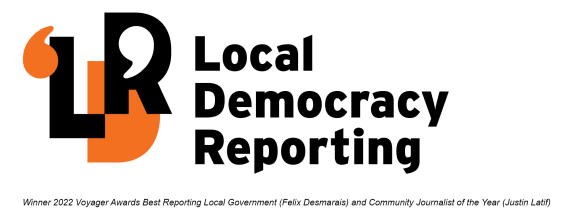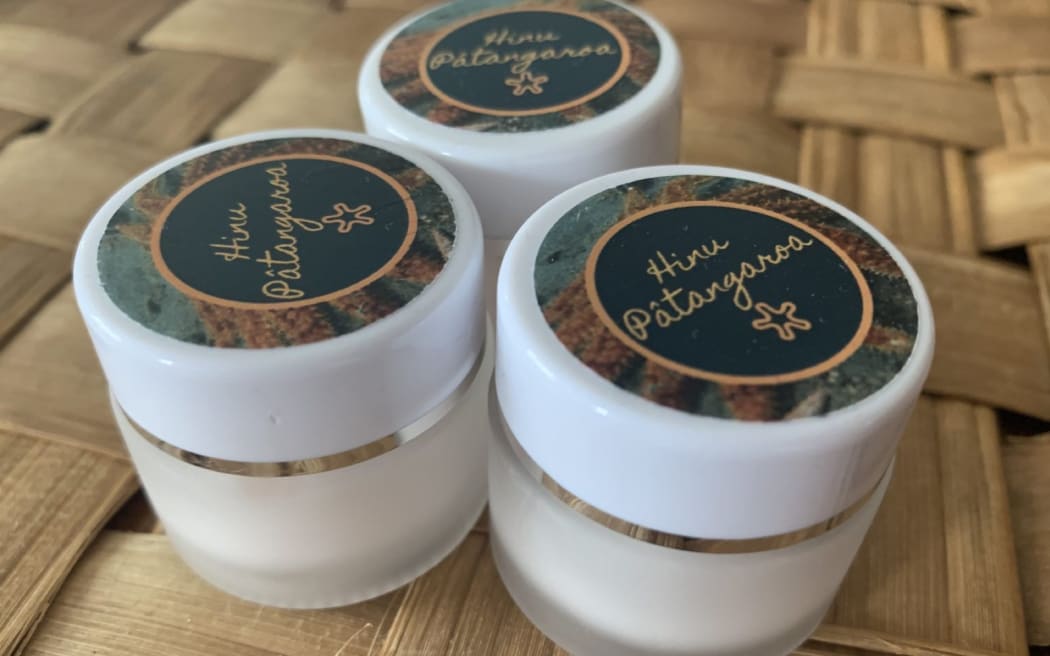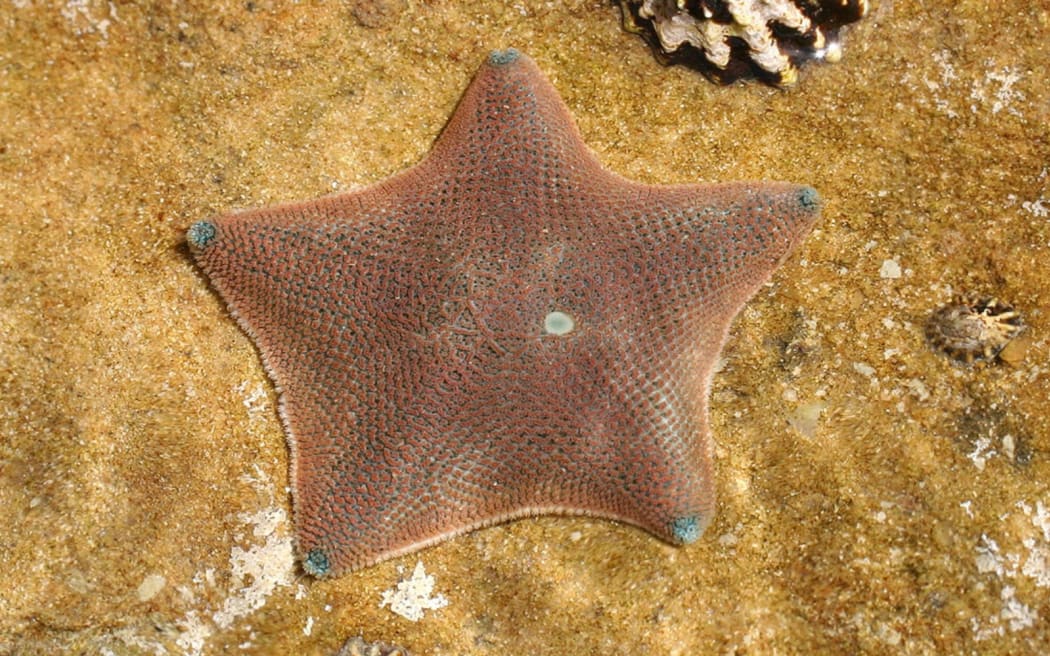The eleven-armed seastar is decimating the mussel population in Ōhiwa Harbour.
Photo: Kura Paul-Burke / Supplied
A new skin cream made from starfish collagen could save more than just people’s skin – it could also save our mussels.
The cream was developed by Cawthron Institute research scientist Dr Matt Miller and Plant and Food Research marine biopolymer science team leader Dr Mathew Cumming by extracting collagen from starfish taken from Ōhiwa Harbour.
The production of the cream was just one part of the Awhi Mai Awhi Atu project to inform a seastar management plan for the harbour, funded by the Sustainable Seas National Science Challenge project and overseen by University of Waikato professor Kura Paul-Burke. The Ōhiwa Harbour Implementation Forum was updated on the project on Tuesday.
Seastars have been increasing in numbers in the harbour in recent years, decimating the shellfish populations.

Part of the project was a product development study to identify potential economic value in harvesting seastars to assist population management. Conducted by Miller and Cumming, it was found that seastars are a good source of marine collagen, which is in high demand as an ingredient in cosmetics.
Sixty pottles of a product called Hinu Pātangaroa (Starfish cream) was developed using 1 percent starfish collagen. This amount of product was produced using just three starfish.
The product was developed to find ways for removal of starfish from the harbour to be at least partially self-financing.
“The whole idea was to create this wonderful circular economy opportunity where the removal of the starfish could be funded through a product derived from the starfish,” Miller said.
He said starfish creams were very popular in Asian countries such as Korea.
“It’s based around the idea that if you remove a piece of a starfish it grows back, so if you smear some of this stuff on your face the wrinkles may drift away. There are a whole lot of marketing opportunities open to you.”
Cumming said there were a few options for partnering with companies that have an interest in collagen products, either providing frozen starfish or selling the extracted collagen powder or creating the end product.
Paul-Burke told Local Democracy Reporting Ngāti Awa conservationist Te Kei Merito designed the labels for the test product and gifted the name, Hinu Pātangaroa, for the hand cream.
“People were wanting us to just remove the starfish, but they’re meant to be there, in balance. Would you just throw them away? They have their own mana and their own mauri. So we thought maybe we could use them to make a product, and then all of the profits could come back to help us protect the harbour. That was our rationale – from the harbour, for the harbour.”
Forum chairman Toi Iti expressed concern about investing in the creation of a product that would result in the harbour becoming a “starfish farm”, but was interested in collecting the starfish and providing them to companies to extract the collagen.
“I’m not sure whether we should go through the process of scoping out us, or anyone locally, going into the cosmetic business, but certainly taking the raw product and shipping it off to someone who could put it to use would be great.
“If there was a bit of money there that went into other initiatives around the harbour then it ticks a lot of boxes for me.”
Miller said he would try to identify companies that might be interested in buying raw, frozen starfish.

Ngāti Awa conservationist Te Kei Merito designed the labels for the test product and gifted the name, Hinu Pātangaroa, for the hand cream made with marine collagen extracted from starfish in Ōhiwa Harbour.
Photo: Kura Paul-Burke / Supplied
The project also included a feasibility trial for removing starfish from the harbour, carried out between May 2022 and January 2023, led by PhD student Megan Ranapia.
While the study was aimed at the 11-armed seastar (Coscinasterias muricata), it was found during the trial that large numbers of the cushion star (Patiriella regularis) were also predating juvenile mussels and there were much more of this type of star than previously thought. As a result the trial was widened to include the cushion star.
Experiments took place in an eight-hectare area in the western channel of the harbour. Three removal methods were used, hand picking the starfish by divers, trapping, and a combination of both. The diver method proved more effective at removing larger 11-armed seastars, while the trapping method was more effective at catching smaller animals. Over 18 days of trapping, 550 11-armed seastars and 18,900 cushion stars were trapped. It was also found that the trapping method could be used year round while diving required fair weather conditions and good visibility.
Ranapia said her team removed an estimated one-fifth of the starfish in the area during the trial and were encouraged to see clusters of baby mussels starting to form on mesh in the areas by the end of it.
“We have not seen baby mussels growing in this harbour in the last 10 years, so this was very exciting.”

Recent starfish removal feasibility trials showed the common New Zealand cushion star (Patiriella regularis) had become much more populous and was also a predator for mussels.
Photo: Kura Paul-Burke / Supplied
Paul-Burke said the project originally started back in 2007 funded by Te Rūnanga o Ngāti Awa, for three years. Then, between 2009 and 2016 it was funded by herself and her husband, Whakatāne commercial diver and charter boat operator Joe Burke. In 2017 and 18 she started working at Niwa and they funded a small part of the project. From 2019 to now it has been funded by Sustainable Seas.
The project currently managed four mussel restoration stations within the harbour which had been very successful, increasing the mussel population from an estimated 78,000 mussels to an estimated 750,000 mussels.
Paul-Burke said that funding for the project ended in June this year.
Several options were provided in the report for future options and the forum members asked Burke to put together some costings around those options for consideration in long-term planning.
Local Democracy Reporting is Public Interest Journalism funded through NZ On Air.





















Discussion about this post